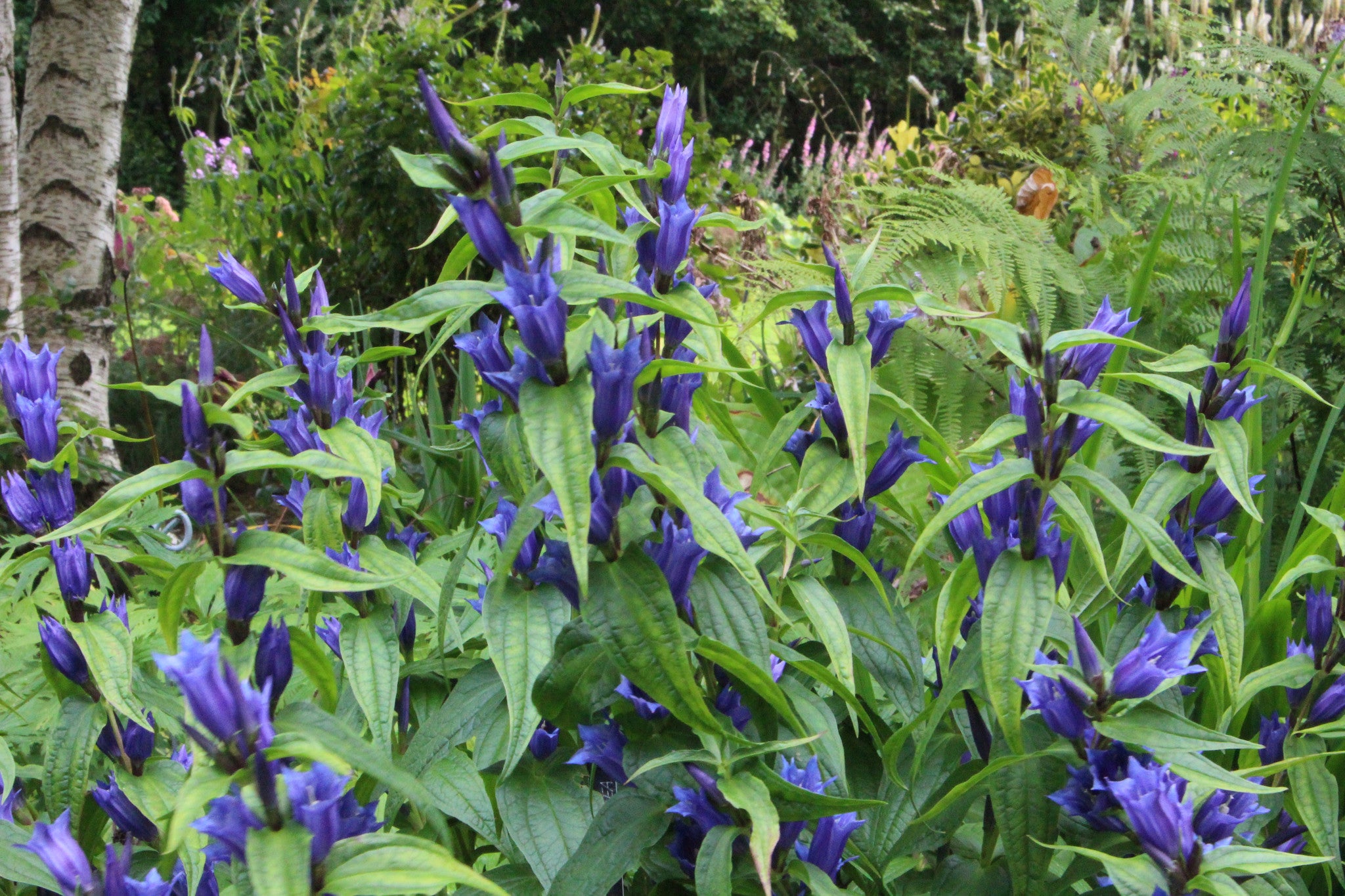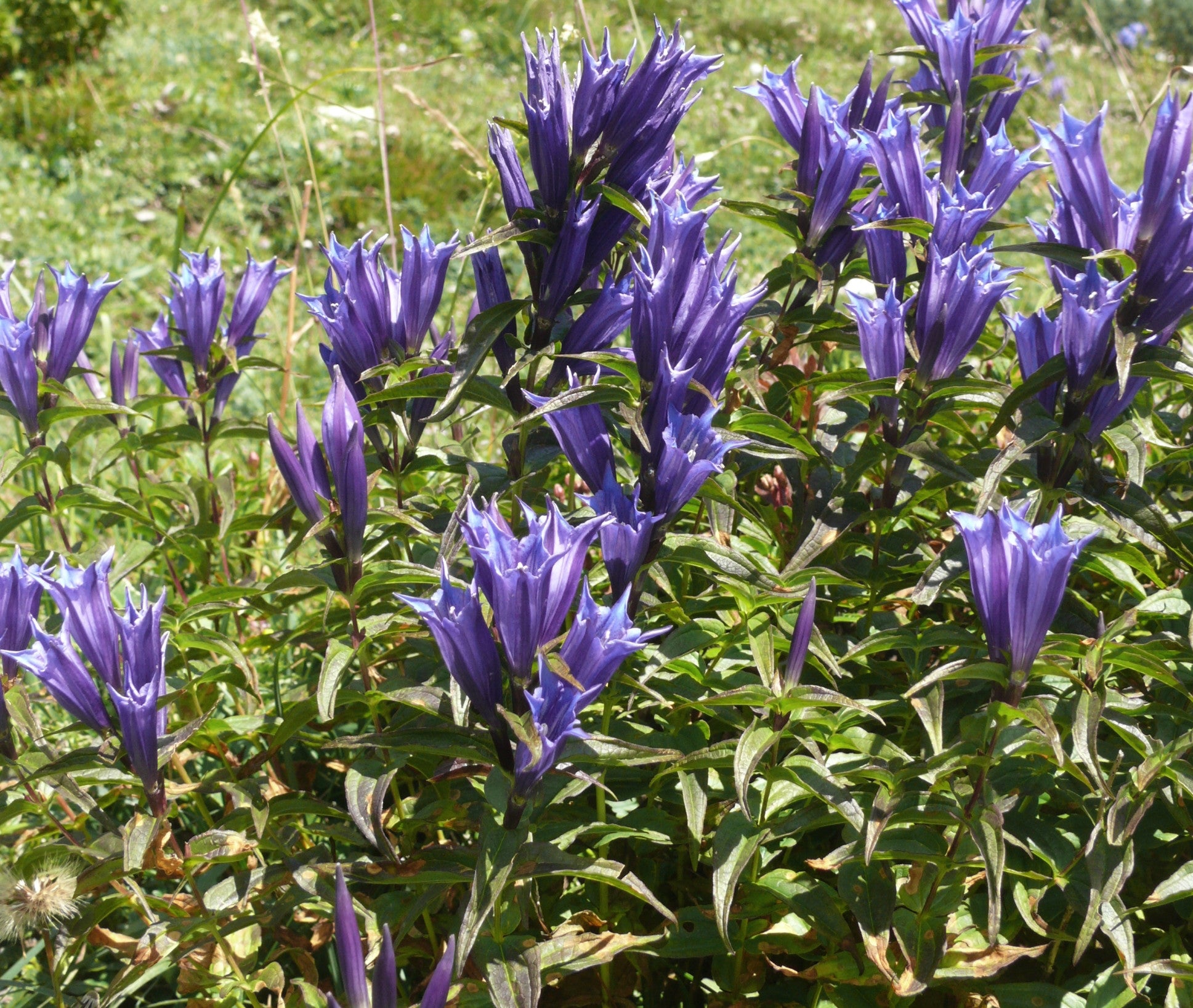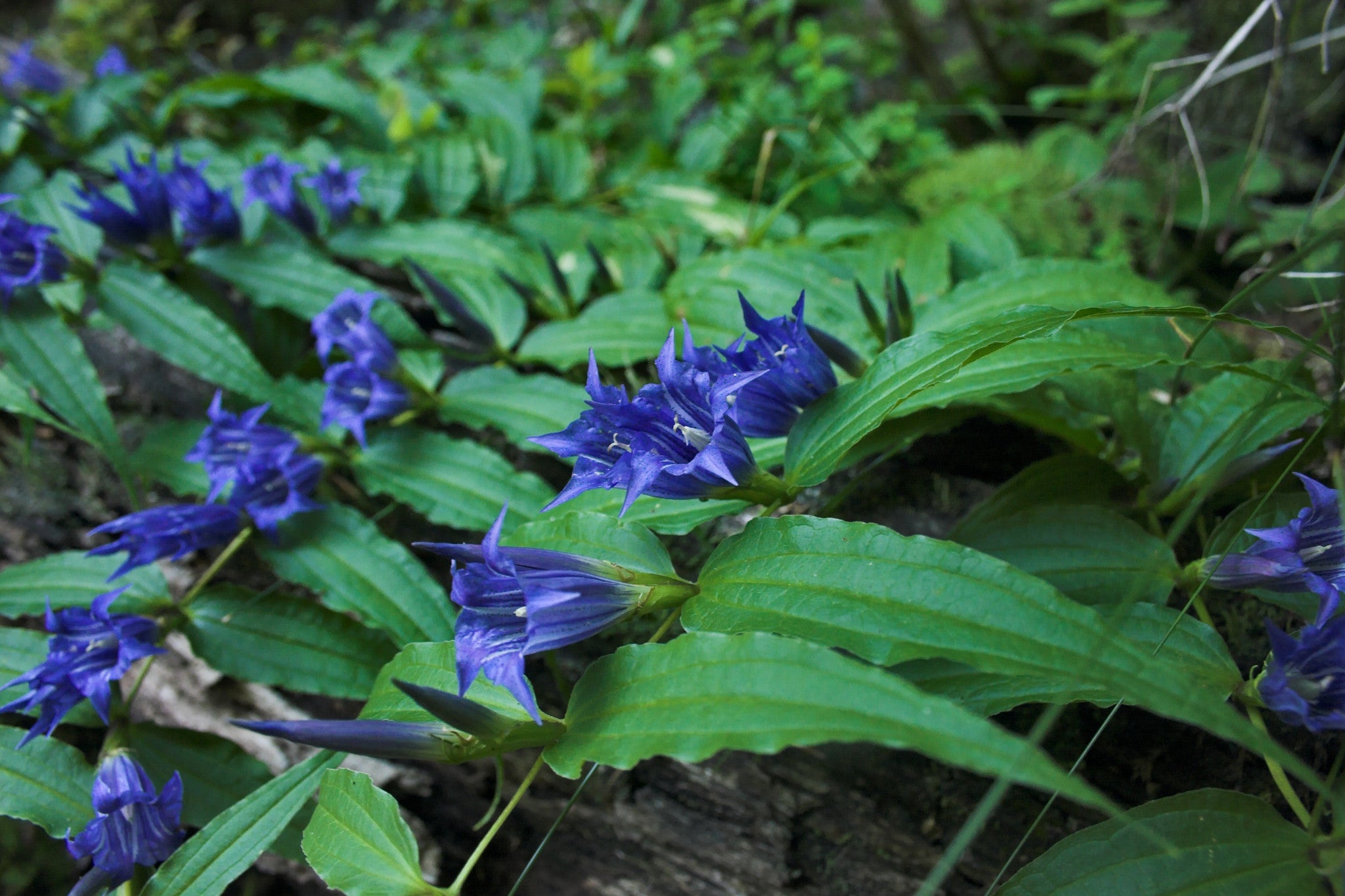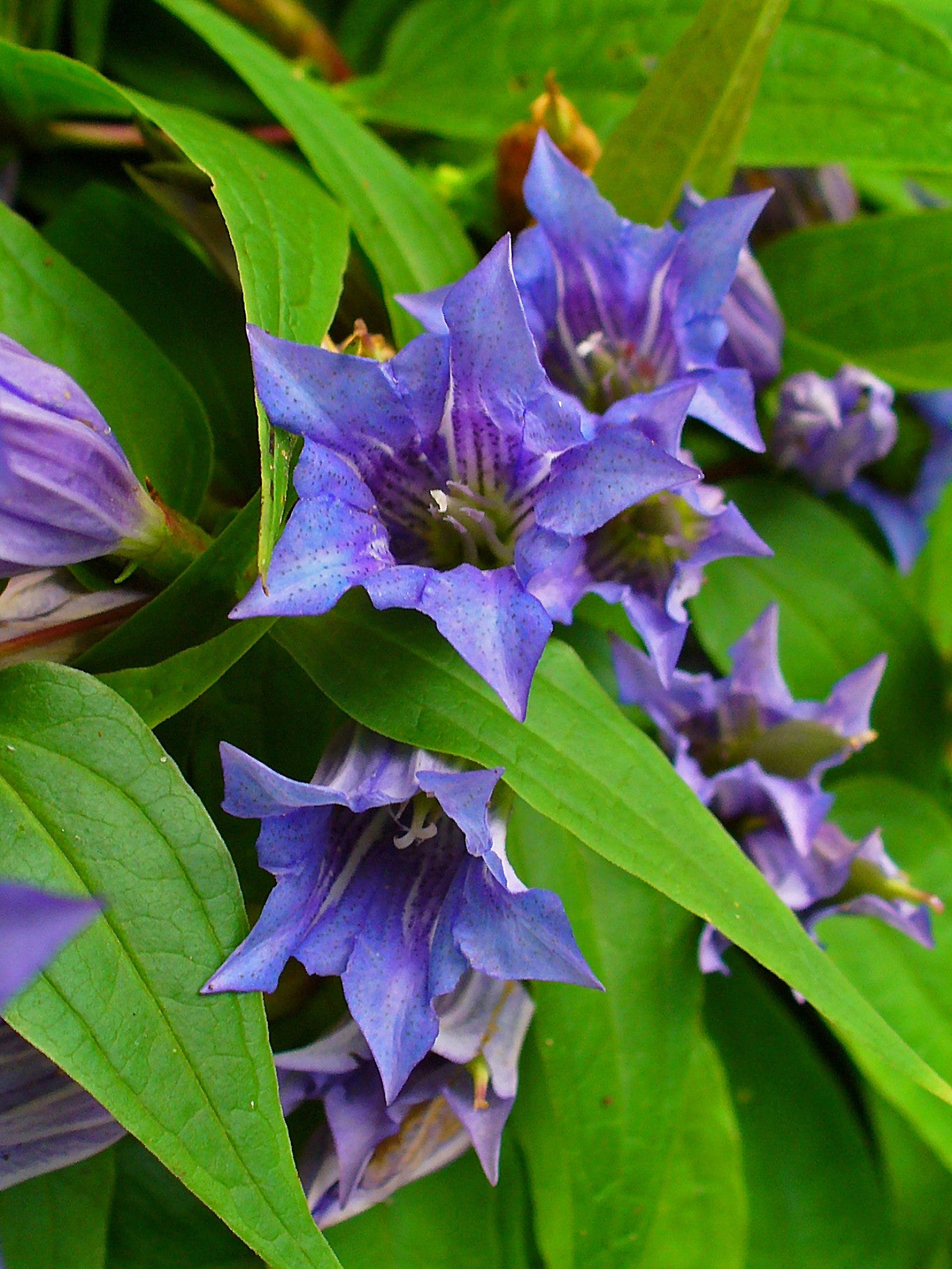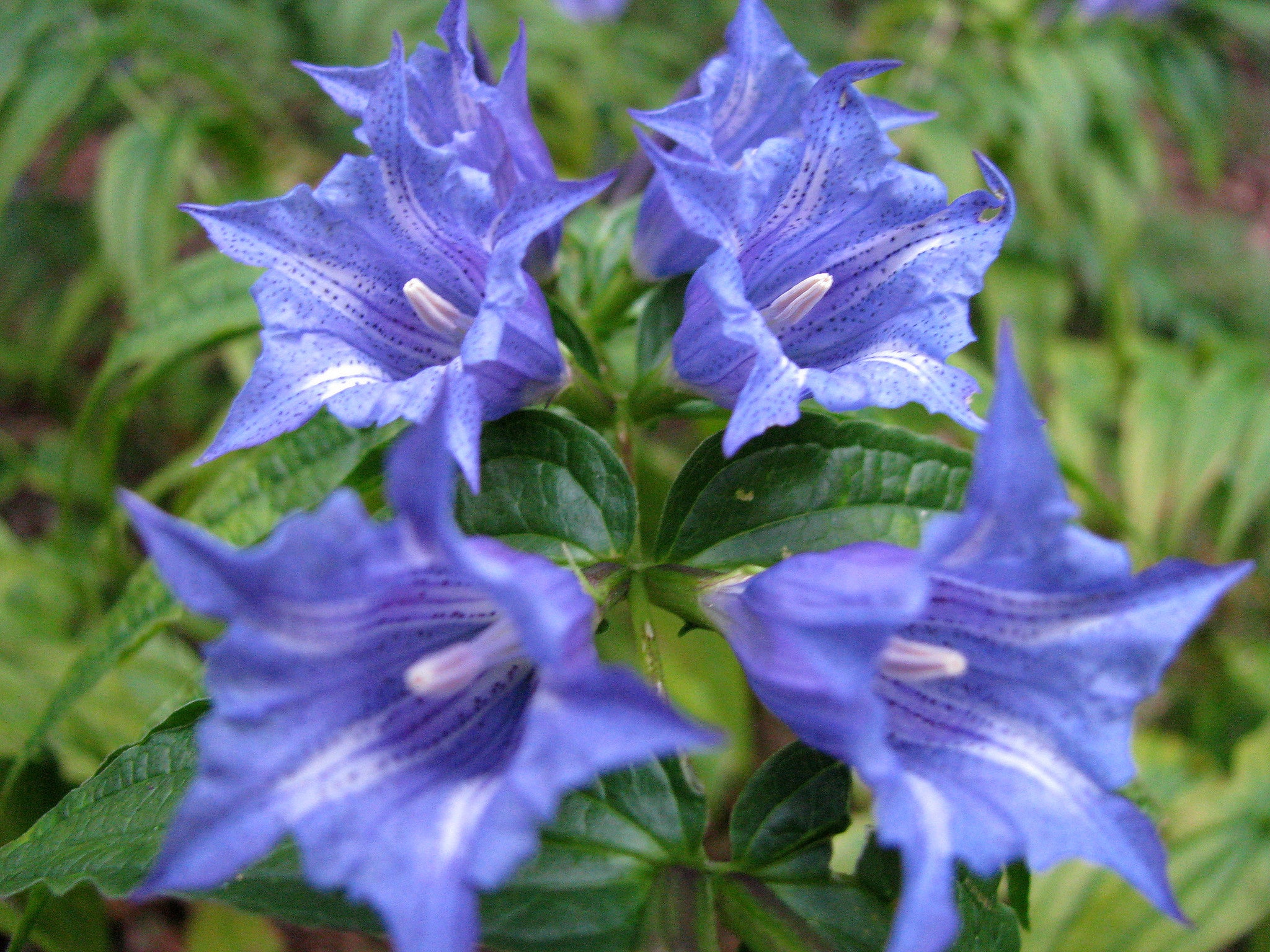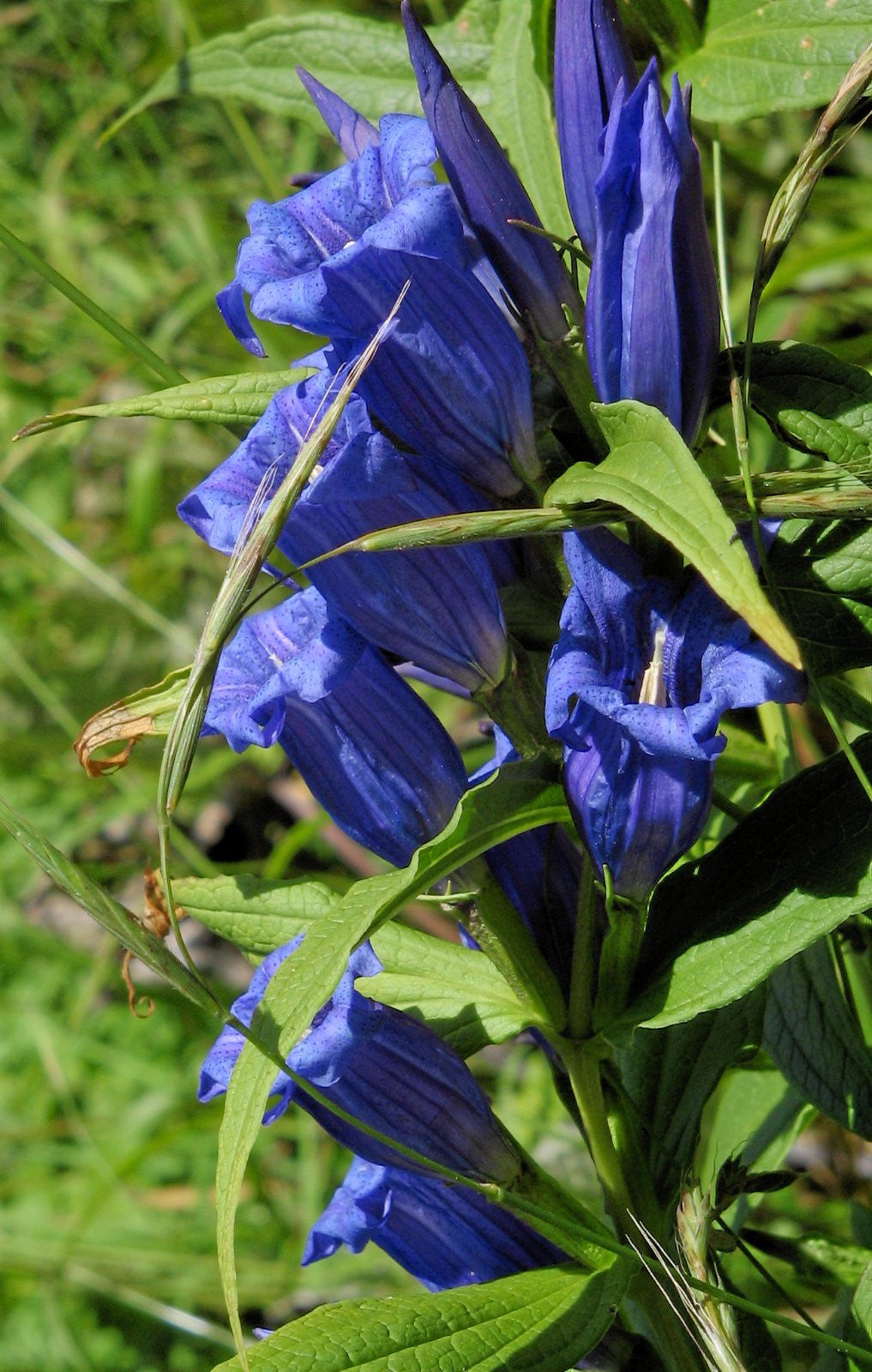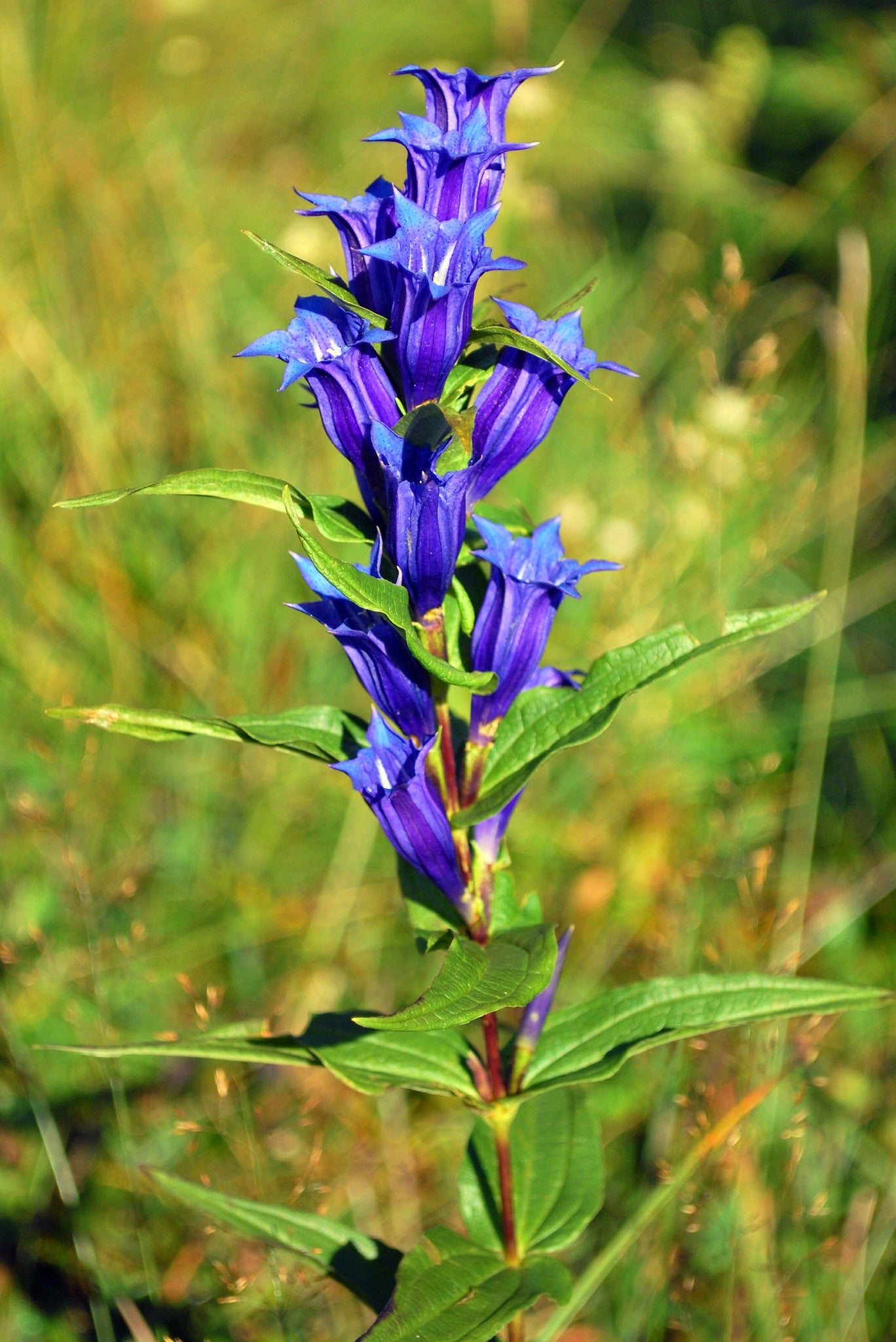Gentiana asclepiadea
Approx. 0.5 litre pot
About this cultivar:
Gentiana asclepiadea is the species - this one comes to us from the moist woods of Eastern Europe. Its long leaves are arranged in opposite pairs along arching stems from midsummer to autumn, with terminal panicles of upright, blue flowers.
- Position: Full sun, partial shade
- Soil: Almost any soil, grows well in Ballyrobert
- Flowers: July, August, September
- Other features: Grows well in Ballyrobert
- Hardiness: Fully hardy - grows well in Ballyrobert!
- Habit: Clump forming
- Foliage: Deciduous
- Height: 45 - 60 cm (1.5 - 2 ft)
- Spread: 45 - 60 cm (1.5 - 2 ft)
- Time to full growth: 2 to 5 years
- Plant type: Herbaceous Perennial
- Colour: Green, blue
- Goes well with: Carex and Iris or think about other small pants like Primula auricula, Pulsatilla vernalis and Saxifraga
About this genus:
Gentiana (jen-she-an-a) is a genus of flowering plants belonging to the gentian family (Gentianaceae),. With about 400 species it is considered a large genus. They are notable for their medicinal properties and mostly large, trumpet-shaped flowers, which are often of an intense blue, but can be white. The genus name is a tribute to Gentius, an Illyrian king who may have been the discoverer of tonic properties in gentians.
Gentians prefer a sunny to part-shade site and are known for loving moisture, but will not tolerate being waterlogged. Often thougth of a wild-flower (Gentiana verna can still be found growing wild in western Ireland) in the right spot in a garden, Gentians will provide you with beautiful blue, butterfly-attracting flowers in late summer or autumn.
You can plant them in a wild fashion, but don't feel constrained. Try combining with other moisture-loving plants such as Carex and Iris or think about other small pants like Primula auricula, Pulsatilla vernalis and Saxifraga. Gentians are perfect for rock gardens, alpine beds, containers or the front of a perennial border.

